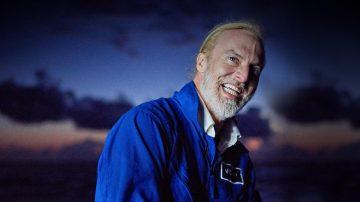Oliver Franklin-Wallis in MIL:
 The submarine DSV Limiting Factor bobbed in the Atlantic swell. Gleaming white, with a hull the shape of a hip flask, its lights gave the water an otherworldly glow. Stooping slightly inside the crew compartment – a snug titanium sphere 1.5 metres across with two white leather seats and three portholes the size of dinner plates – Victor Vescovo looked into the gloom. Eight kilometres below him, at the floor of the Puerto Rico Trench, lay his destination: the Brownson Deep, the deepest point in the Atlantic. Vescovo braced as a wave rocked the hull. Tall and athletic, with a blond ponytail and white beard, Vescovo is a Texan private-equity investor. He had scaled the tallest mountain on every continent and skied the last degree to both Poles, making him one of only a few dozen people to have completed the “Explorer’s Grand Slam”. Now, at 53, there were no mountains higher. Every continent was mapped and visible on Google Earth. He wanted to make history. The only way was down.
The submarine DSV Limiting Factor bobbed in the Atlantic swell. Gleaming white, with a hull the shape of a hip flask, its lights gave the water an otherworldly glow. Stooping slightly inside the crew compartment – a snug titanium sphere 1.5 metres across with two white leather seats and three portholes the size of dinner plates – Victor Vescovo looked into the gloom. Eight kilometres below him, at the floor of the Puerto Rico Trench, lay his destination: the Brownson Deep, the deepest point in the Atlantic. Vescovo braced as a wave rocked the hull. Tall and athletic, with a blond ponytail and white beard, Vescovo is a Texan private-equity investor. He had scaled the tallest mountain on every continent and skied the last degree to both Poles, making him one of only a few dozen people to have completed the “Explorer’s Grand Slam”. Now, at 53, there were no mountains higher. Every continent was mapped and visible on Google Earth. He wanted to make history. The only way was down.
The deep ocean is the Earth’s last great unexplored frontier. Below the surface, sunlight fades. Soon you are in total darkness. It is cold. Communication is difficult. At 100 metres the pressure is ten times that on the surface; at 2,000 metres, it is great enough to collapse a US Navy submarine. Apart from Vescovo’s, fewer than ten manned craft are currently able to operate below 3,700 metres, the ocean’s average depth, and no other active ones can go below 7,500 metres. At that point, submariners enter what oceanographers call the Hadal Zone, derived from Hades – the Ancient Greek underworld. The ocean’s deepest point, the Pacific’s Challenger Deep, is nearly 11km down. When Vescovo set out, only three men had ever seen it. Twelve have walked on the Moon.
No one had ever reached the deepest points in all five oceans. So in 2015 Vescovo hired Triton Submarines, a company that makes private submersibles, to build him a craft that could take him to them. Three years in development, at a cost of $49m, the Limiting Factor (named for a spacecraft in Iain M. Banks’s sci-fi Culture novels) was the most advanced private submersible ever built. Vescovo also bought a ship, the DSSV Pressure Drop, which he fitted out with an advanced sonar-imaging system to map the seafloor in unprecedented detail. He called his year-long expedition “The Five Deeps”, and invited a documentary crew from the Discovery Channel to chronicle the historic endeavour.
More here.
